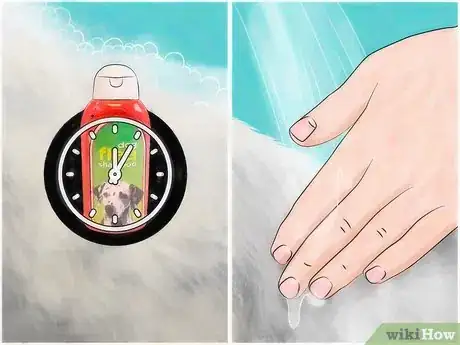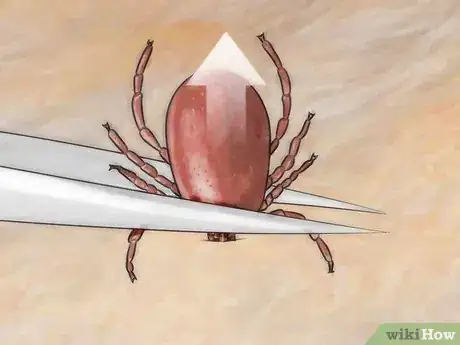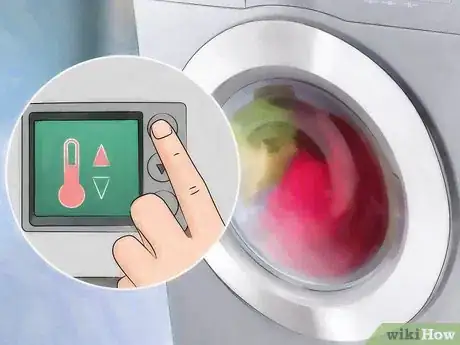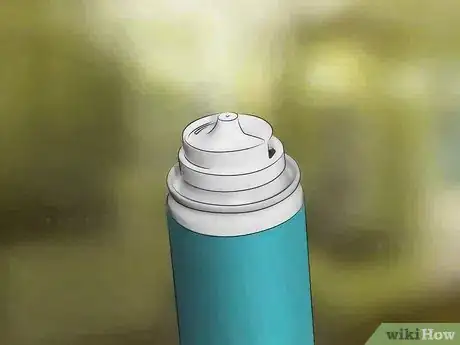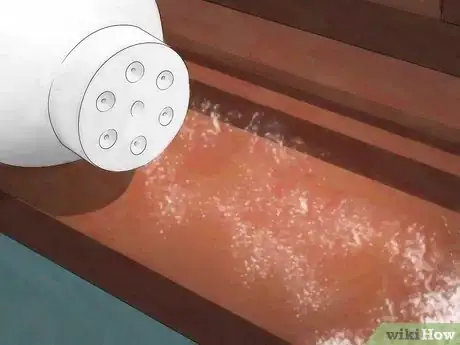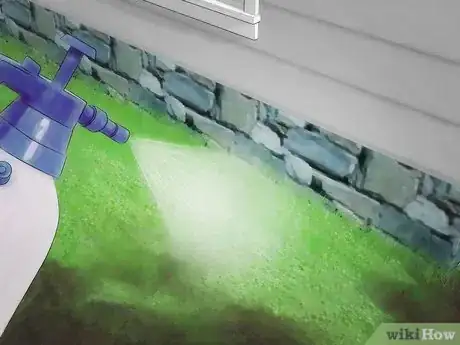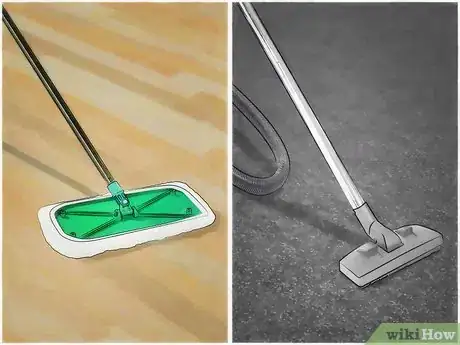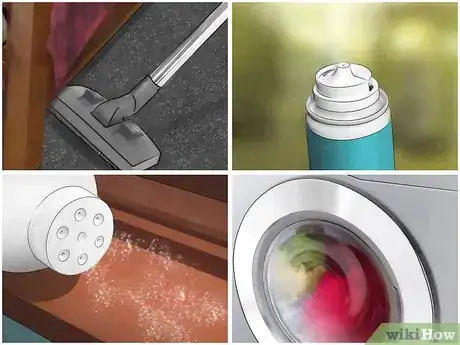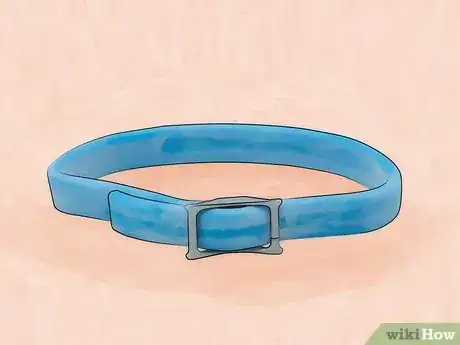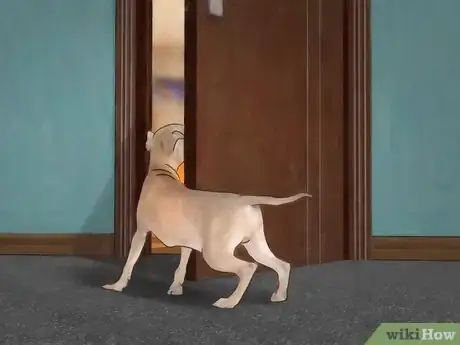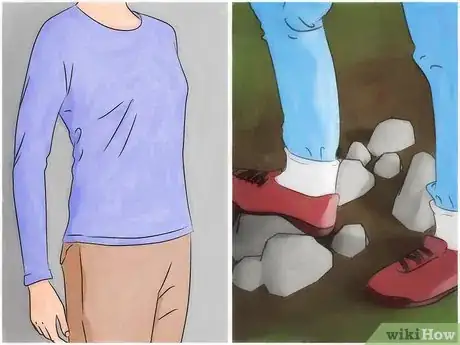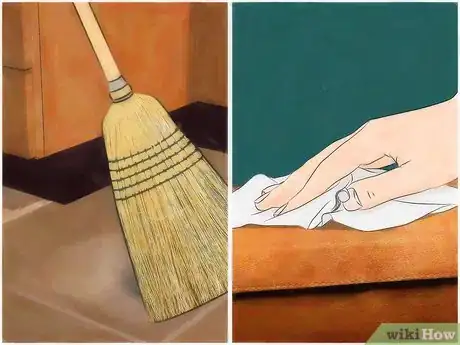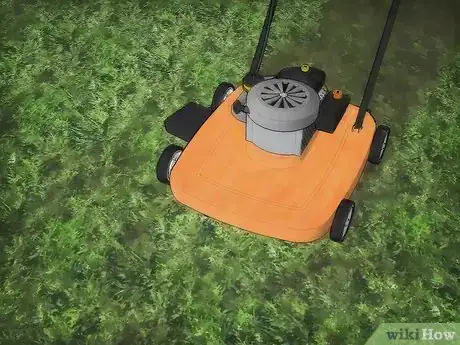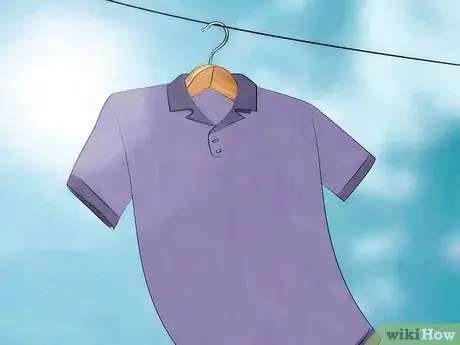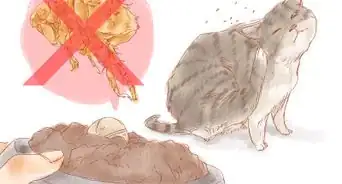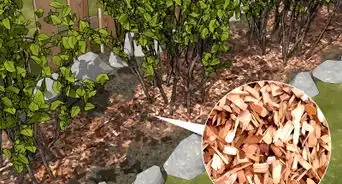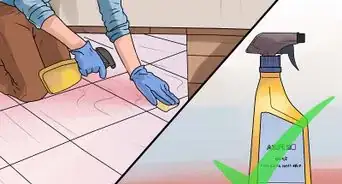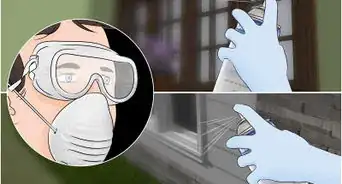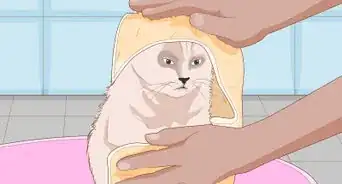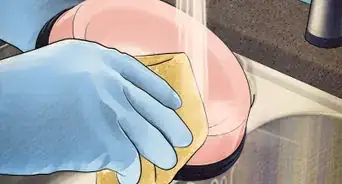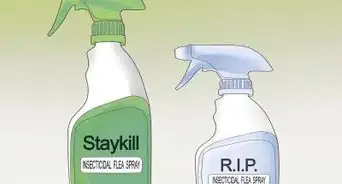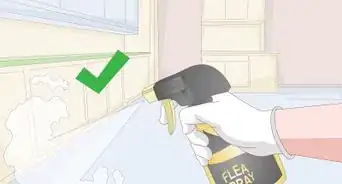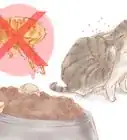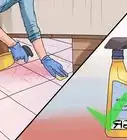This article was co-authored by Scott McCombe. Scott McCombe is the CEO of Summit Environmental Solutions (SES), a family-owned local pest solutions, animal control, and home insulation company based in Northern Virginia. Founded in 1991, SES has an A+ rating with the Better Business Bureau and has been awarded “Top Rated Professional,” and “Elite Service Award" by HomeAdvisor.
There are 7 references cited in this article, which can be found at the bottom of the page.
wikiHow marks an article as reader-approved once it receives enough positive feedback. In this case, 100% of readers who voted found the article helpful, earning it our reader-approved status.
This article has been viewed 620,370 times.
Fleas and ticks in your home can be a nuisance, and if they aren’t dealt with properly, they can just keep coming back. To properly kill ticks and fleas, you must treat pets, wash and clean everything, and treat the house inside and out to prevent another infestation. While ticks don’t infest homes as often as fleas, tick infestations do occur, and they need to be dealt with quickly and efficiently, as ticks can carry several diseases. Ticks and fleas often enter a home on a pet or another animal that gets into the house, so one of the best ways to prevent infestations is by protecting your pets against these invaders.
Steps
Killing Ticks and Fleas Indoors
-
1Treat your pets. If you’ve discovered fleas or ticks indoors, it’s most likely that they’re still hiding on your family dog, cat, or other pet. Bathe your pets with a special shampoo that’s designed to kill fleas and ticks:[1]
- In a bathtub, laundry tub, or outside, rinse your pet to get his fur wet.
- Apply the shampoo and massage it thoroughly into his fur.
- Let the shampoo sit (check the bottle for the specific amount of time).
- Rinse the shampoo out of your pet’s fur.
-
2Remove ticks from your pet. In case your pet has any ticks burrowed in his skin, it will be necessary to remove them immediately. If you don't feel comfortable, talk to your vet. To remove ticks:[2]
- Grab tweezers and gloves. Put on the gloves.
- Locate the tick and use the tweezers to squeeze the tick. Be sure to grasp near its head, as close to your pet’s skin as you can manage. Do not squeeze the tick near its belly.
- Hold on to the tick firmly with the tweezers and pull it straight out.
Advertisement -
3Wash everything. Use the hottest water possible and high-soil settings to wash clothes, linens, bedding, towels, and even toys. Use the highest drier settings as well, to ensure that the washing and drying process kills any fleas, ticks, and larvae that might be hiding out.[3]
- Don’t forget to wash pet bowls, water dishes, and anything that needs to be washed in the sink that could be housing adults or larvae.
-
4Vacuum your entire house. Once everything’s been picked up and put in the washing machine, thoroughly vacuum everywhere and be sure to get in all the nooks and crannies. When you’re finished, dispose of the vacuum bags immediately, as they can house living flea larvae.[4]
-
5Spray your home with insecticide. Use either an aerosol spray or dust that’s designed to kill fleas and ticks, such as Ultracide, Onslaught, Permethrin, or Bifen.[5] You can also use other pyrethrin-based pesticides, [6] but make sure they contain an insect growth regulator that will prevent reproduction.[7] Make sure all people and pets are out of the house, and wear protective gear like gloves and a mask.
- Start away from the front of the house and work your way toward the door, focusing especially on areas where pets spend a lot of time.
- Apply a light mist or dusting to floors, carpets, on and under rugs, pillows, on and under furniture, window sills, curtains, pet beds that couldn’t be washed, baseboards, and all cracks and crevices where ticks and fleas could be hiding.[8]
- Keep everyone out of the house until the spray has dried or the dust has had time to settle.
-
6Apply a desiccant. Once your spray has dried, apply a desiccant that will dry out and kill insects and arachnids and their eggs. Focus on areas that pets frequent, behind and under baseboards, carpets and rugs, behind doors and moulding, and all other nooks, cracks, and crannies.[9] Good desiccants for this purpose include:
- Evergreen Pyrethrum Concentrate
- Drione Dust
- Boric acid, which is good for eggs and larvae[10]
-
7Spray outside. If there are fleas or ticks living in the vicinity of your home, you must also deal with them, otherwise the infestation will keep recurring. Ticks can be found in overgrown areas, wooded areas, and tall grasses. Fleas like shaded, damp areas, such as under trees and shrubs. Remember to spray the lawn, bushes, shrubs, trees, fences, sheds, and play areas to keep away ticks and fleas.[11]
- You can use the same product you applied inside your house to target flea and tick habitats outside your home.[12]
- You may have to regularly reapply pesticide outside if you live in an area that’s prone to flea or tick infestations. Consider applying an insecticide outside every three months to keep pests under control.
-
8Vacuum, dust, and mop the whole house. Within 48 to 72 hours of treating your house, clean everything again to pick up dead fleas, ticks, and eggs.[13]
-
9Repeat as necessary. Ideally, you will only have to go through this process once, but it may take several cleaning and insecticide treatments before you fully destroy all the ticks or fleas plaguing your home.
Preventing Infestations
-
1Protect your pets from ticks and fleas. Use collars, sprays, skin treatments, or dips that will kill fleas and ticks that come in contact with your pets.[14] This will protect your pet from infestation and disease, and protect your home from pests. Talk to your vet about the best product for your pet.
-
2Mind your pet’s comings and goings. Since pets are usually how ticks and fleas enter your home, keep an eye on them and monitor when they come in and out. Groom them after they’ve been outside, and keep them off furniture (ticks and fleas can hide out in fabrics and cushions).
-
3Protect yourself. When venturing outside into tick- or flea-prone areas, wear long pants and long-sleeved shirts. Tuck your pant legs into your socks and your shirt into your pants at the waist. Spray yourself with an insect repellent that contains DEET, and spray your clothes with a repellent containing permethrin.
-
4Vacuum and clean often. Keeping your home as clean as possible will help prevent ticks, fleas, and other pests from getting comfortable there.
-
5Keep grasses and weeds short. Since ticks and fleas like overgrown areas, shrubs, or long grasses, it’s a good idea to keep your grass and weeds three inches or shorter, and keep shrubs and bushes near your house pruned.
-
6Clear attractants from around your home. You want to prevent things that attract fleas, ticks, and the creatures that carry them, such as mice, rats, and birds. Attractants include brush, plants, leaf litter, ivy, wood piles, birdfeeders, and bird baths.[15]
-
7Hang clothes far off the ground and away from wooded areas. Hanging clothes outside is a great way to dry them during the warmer months, but if they are too close to the ground or too near a wooded or grassy area, ticks can crawl onto them and fleas can leap onto them.
- Hang clothes to dry in open areas, away from heavily treed or dense brush areas.
-
8Keep gardens and play areas away from pest habitats. Staying away from tick and flea infested areas can help prevent diseases and infestations. This includes wooded areas, areas that are overgrown, or places with lots of shrubs.
- Keep your gardens in open areas, as well as children’s play areas, playgrounds, gardens, picnic tables, gazebos, patio furniture, and any other play or social area.[16]
-
9Seal entry points. Areas where fleas, ticks, or pest-ridden animals can enter your home should be sealed and covered. This includes vents, areas under decks, crawl spaces, and other access points.[17]
Expert Q&A
Did you know you can get expert answers for this article?
Unlock expert answers by supporting wikiHow
-
QuestionHow do I kill fleas in my house fast?
 Scott McCombeScott McCombe is the CEO of Summit Environmental Solutions (SES), a family-owned local pest solutions, animal control, and home insulation company based in Northern Virginia. Founded in 1991, SES has an A+ rating with the Better Business Bureau and has been awarded “Top Rated Professional,” and “Elite Service Award" by HomeAdvisor.
Scott McCombeScott McCombe is the CEO of Summit Environmental Solutions (SES), a family-owned local pest solutions, animal control, and home insulation company based in Northern Virginia. Founded in 1991, SES has an A+ rating with the Better Business Bureau and has been awarded “Top Rated Professional,” and “Elite Service Award" by HomeAdvisor.
Pest Control Specialist
References
- ↑ Scott McCombe. Pest Control Specialist. Expert Interview. 19 November 2019.
- ↑ http://pets.webmd.com/ss/slideshow-flea-and-tick-overview
- ↑ https://www.youtube.com/watch?v=ABA3kIAd8nI
- ↑ Scott McCombe. Pest Control Specialist. Expert Interview. 19 November 2019.
- ↑ Scott McCombe. Pest Control Specialist. Expert Interview. 19 November 2019.
- ↑ http://www.tickbites.net/how-to-get-rid-of-ticks-in-the-house/
- ↑ http://www.epestsupply.com/fleas.php#killticks
- ↑ http://www.epestsupply.com/fleas.php#killticks
- ↑ http://www.pestproducts.com/ticks2.htm
- ↑ http://www.tickbites.net/how-to-get-rid-of-ticks-in-the-house/
- ↑ http://www.pestproducts.com/ticks2.htm
- ↑ http://www.epestsupply.com/fleas.php#killticks
- ↑ http://www.epestsupply.com/fleas.php#killticks
- ↑ http://www.popularmechanics.com/home/lawn-garden/how-to/g863/6-simple-tips-to-get-rid-of-ticks/
- ↑ http://www.pestproducts.com/ticks2.htm
- ↑ http://www.popularmechanics.com/home/lawn-garden/how-to/g863/6-simple-tips-to-get-rid-of-ticks/
- ↑ http://www.pestproducts.com/ticks2.htm
About This Article
To kill fleas and ticks in your home, start by washing all your clothing, bedding, and soft toys on the hottest setting of your washing machine. Then, dry the load on the highest heat setting as well to make sure that all the fleas or ticks are dead. Next, vacuum the surfaces of your entire house to get rid of any insects or larvae and dispose of the bags right away. If you have a pet that you suspect is bringing in the fleas and ticks, wash it with shampoo that’s designed to kill pests and treat it with flea and tick prevention so it doesn’t bring more into your house. For tips on how to maintain your lawn to make it less hospitable for fleas and ticks, read on!
